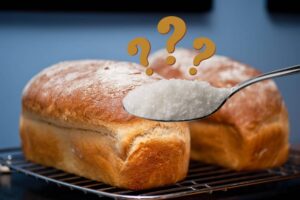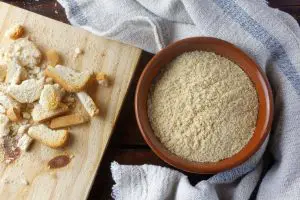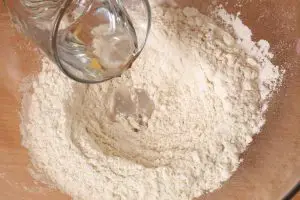There is an art to bread making, and if not done properly, it can come out very wrong. Because of this, it’s important to follow the step-by-step directions on the recipe. However, no matter how closely you have followed the directions, your bread still comes out too dense sometimes.
If this is a problem that you keep running into, don’t give up just yet. Here, we bring you a few solutions to help you make your bread less dense.
Seven Tips to Make Bread Less Dense
No products found.
In order to keep from making the same mistakes over and over again, be sure to follow these simple tips.
1. Using the Right Flour
Choosing the right flour to use for your bread recipe is one of the most important steps of the process. It might not seem like a big deal, but the texture and the type of flour that you use plays a huge role in how the bread will come out.
Whole wheat flour tends to have the hardest texture and will therefore end up giving you the most dense bread as a result. If you are looking for something more light and airy, go with a different type of flour, such as white flour, for example.
2. Measure Ingredients with Complete Accuracy
No matter how much of a professional you think you may be, when it comes to baking bread, be sure to measure things exactly rather than eyeballing the ingredients. If you do, you may end up adding too much flour or not enough of some other type of ingredient. Not measuring your ingredients accurately will only result in a crumbly or dense loaf of bread.
3. Knead Your Dough
Kneading your dough is about as important as choosing the right flour. How dense your bread turns out all depends on how long you kneaded your bread in the beginning. If you want the gluten in your bread to develop more quickly, be sure to knead the dough longer and harder.
4. Using the Right Amount of Water
Adding in the right amount of water is yet another thing you need to consider if you want your bread to turn out perfectly. The amount you add does depend on the consistency that you want your bread to be.
However, it is important to be sure that the ratio of water to flour is correct. If the dough doesn’t have enough water in it, the dough won’t be smooth enough. On the other hand, if there is too much water in the flour, then the dough may end up too soggy.
5. Use Baking Soda
Anyone who has ever baked knows that baking soda is the key to making your bread sweeter and lighter while also enhancing the flakiness of the dough. When baking soda is added, it almost immediately reacts with the acidic fermenting agents that raise the dough. Keep in mind that the baking soda should be added after the dough has been prepared.
6. Proof Your Bread
Once you’ve prepared the dough, be sure to let it sit in a warm dry place, like someplace near the stove. You also have the option to use a proofing box that will create the perfect temperature for your bread.
7. The Right Way to Bake Your Bread
As mentioned previously, baking your bread is a work of art and it needs to be done carefully and precisely. Before sticking your dough in the oven, be sure to preheat the oven at a high temperature, which helps reduce the denseness of the bread.
After preheating the oven, simply put your loaf in and don’t worry about adjusting the temperature. After about 15 minutes of baking, start to reduce the heat in the oven.
What Makes Bread Dense?
Typically, bread becomes dense as a result of not enough gas in the gluten structure. Other times, the bread could be dense because it retained too much moisture, something that happens often with breads that are made with whole-grain flours.
Another reason why your bread might be dense is if you did not spend enough time kneading it, as mentioned earlier. Kneading the dough releases the gas and thus creates an airy, fluffy bread. Not spending enough time on this step will mean your bread will end up feeling like a piece of brick.
Oftentimes, people start out kneading the dough with full force but then lose motivation towards the middle or end of the process. However, it’s important that you maintain consistency with the kneading of the dough.
Another reason why your dough might be too dense is because you may have used too much flour in the recipe. Your dough should ultimately be sticky, and if it isn’t, there is too much flour in it and you can expect a dense loaf of bread as a result. Again, be sure to use light flours if you want fluffy bread, and steer clear of whole wheat or rye.
Not giving your dough enough time to rise is yet another reason why your bread may have turned out too dense for your liking. If you notice that your dough appears to be compressed around the edges, chances are that you didn’t let it sit out long enough. As mentioned previously, be sure you leave your dough long enough to rise near a warm area like your oven. Be sure to keep an eye on it as you don’t want to leave it sitting out for too long.
Conclusion
Again, baking bread isn’t something that can be done as easily as people might think. It takes a lot of time, patience, and dedication. But ultimately, the payoff is worth it. If you keep ending up with dense loaves of bread and keep asking yourself, “How to make bread less dense?” simply read through some of the tips and tricks that we have outlined above. Before you know it, you’ll have nailed the bread-making process on your own.






